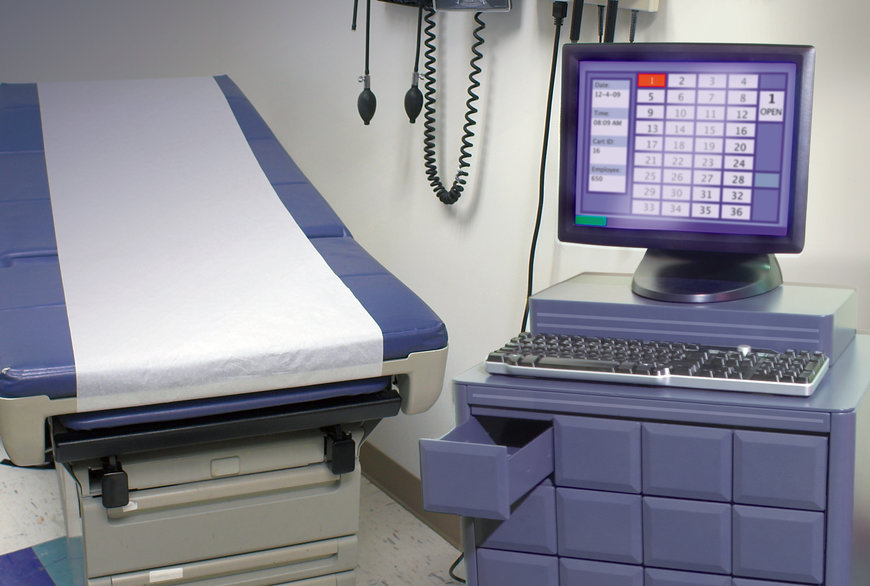www.industryemea.com
17
'20
Written on Modified on
Locking into the Future: Electronic Access for Medical Equipment
Enhance Security, Reduce Infection.

The need for physical security in the health care industry is no longer limited to grounds, building and room access. Today, security must extend down to medical devices such as dispensing carts and new portable diagnostic equipment. For many health care facility owners and operators, monitoring security and usability at the device level can be a challenge, and they are looking to the manufacturers of these devices for solutions.
To meet this growing need for more security in medical applications, manufacturers must build equipment, such as medical carts, by employing access control systems that meet regulatory requirements and can be networked with the facility’s larger security infrastructure to ensure safe and intuitive end user operation.
Health Care Meets the Digital Age
The conversion of medical records to an electronic format is making it easier to share and access data among the health care network. However, as advised by the Health Information Portability and Accounting Act (HIPAA) and EU General Data Protection Regulation (GDPR), patient data must be kept secure and protected from data breaches, adding a level of security concerns for both equipment manufacturers and facility operators.
While this new technology was designed to help streamline work processes for medical personnel, it has also moved equipment out into areas that are more accessible to non-employees, such as the patient bedside and facility corridor. This means that supplies, drugs and other controlled substances may be more vulnerable to theft or human error.
Unfortunately, many facility operators have been saddled with 20th century security to protect 21st century equipment. Managing mechanical keys can be complicated, inconvenient and costly.
Removing Physical Keys
Physical keys need to be carefully managed to ensure they are in the hands of authorized personnel only. These keys must be retrieved and reassigned when employees change shifts or are no longer employed by the institution. With some facilities reporting key loss as a major contributor to procedure disruption, failure to manage keys can create an unwelcome challenge. The use of physical keys also presents a risk to the spread of infection, with multiple staff sharing the same key.
By replacing traditional key locks with electromechanical locks and latches (EMLs) access to medical equipment can be easily modernized to meet evolving security and safety needs.
Solutions for Physical Security and Monitoring
EMLs allow medical equipment manufacturers to build intelligent security into their products. When used as part of an electronic access system (EAS), an electronic lock creates an electronic signature that can provide user authentication, audit trail and reporting capabilities, simplifying security administration and eliminating opportunities for physical security breaches.
Each time an EML equipped enclosure opens or closes, a signal is sent to a monitoring system to confirm and log access. Depending on the configuration, EAS reporting can provide more than just simple open/closed information – such as which credential activated the EML and the time and duration of the event.
Using an EML with all or part of an existing security system is a cost-effective choice for the health care institution considering new or retrofitting existing equipment, as it provides the operator with real-time monitoring, an audit trail of all access activity and the removal of the physical key.
An electronic rotary latch, for example, is a compact latch which is mounted inside the equipment, using minimal interior space and allowing a clean exterior appearance that protects it from vandalism. Electronic rotary latches can be easily wired directly to a wide variety of access-control devices, from standalone keypads to networked RFID proximity readers and biometric readers for a complete remotely managed access system.
Best Practices for EML Selection
When designing physical security into medical enclosures, manufacturers must anticipate the need for modern methods of access control and incorporate new technology, while still providing a solution that is cost-effective and meets the requirements of the changing health care landscape. Incorporating appropriate electromechanical locks into medical enclosure design is key to delivering an end product that delivers convenience, usability and above all, security.


